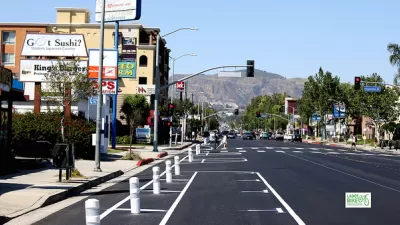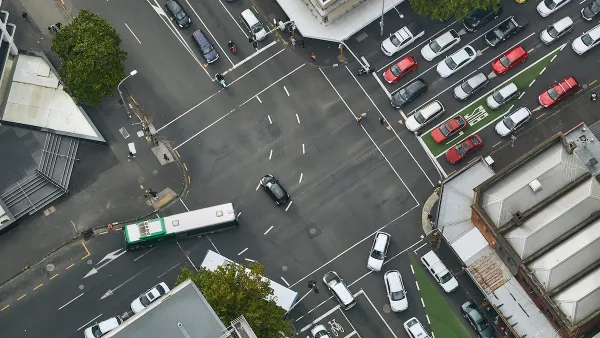California Governor Gavin Newsom over the weekend vetoed a bill that would have required the state's department of transportation to consider public transit as well as bike and pedestrian infrastructure when planning projects on state-owned roads.

"Gov. Gavin Newsom has rejected a bill that sought to turn California highways into walkable civic spines, saying it would have been too prescriptive and costly," according to an article by Rachel Swan.
"On Saturday, Newsom praised the intent of SB127 by state Sen. Scott Wiener, D-San Francisco. But he said Caltrans is already investing in pedestrian improvements and bicycle lanes when it’s appropriate and cost-effective, and that the agency didn’t need a new law to tie it down."
SB 127 would have required Caltrans "to consider the needs of cyclists, pedestrians and public transportation whenever it started a major project, such as resurfacing a road," according to Swan. "The bill applies to state highways that function as city streets, such as Van Ness Avenue, 19th Avenue and Sloat Boulevard in San Francisco, Highway 1 in Half Moon Bay, and Santa Monica Boulevard in Los Angeles."
For more on the bill's intent, see earlier coverage by Planetizen correspondent Irvin Dawid.
FULL STORY: Governor vetoes bill to require walkable, bike-friendly roadways

Maui's Vacation Rental Debate Turns Ugly
Verbal attacks, misinformation campaigns and fistfights plague a high-stakes debate to convert thousands of vacation rentals into long-term housing.

Planetizen Federal Action Tracker
A weekly monitor of how Trump’s orders and actions are impacting planners and planning in America.

In Urban Planning, AI Prompting Could be the New Design Thinking
Creativity has long been key to great urban design. What if we see AI as our new creative partner?

Florida Seniors Face Rising Homelessness Risk
High housing costs are pushing more seniors, many of them on a fixed income, into homelessness.

Massachusetts Budget Helps Close MBTA Budget Gap
The budget signed by Gov. Maura Healey includes $470 million in MBTA funding for the next fiscal year.

Milwaukee Launches Vision Zero Plan
Seven years after the city signed its Complete Streets Policy, the city is doubling down on its efforts to eliminate traffic deaths.
Urban Design for Planners 1: Software Tools
This six-course series explores essential urban design concepts using open source software and equips planners with the tools they need to participate fully in the urban design process.
Planning for Universal Design
Learn the tools for implementing Universal Design in planning regulations.
Gallatin County Department of Planning & Community Development
Heyer Gruel & Associates PA
JM Goldson LLC
City of Camden Redevelopment Agency
City of Astoria
Transportation Research & Education Center (TREC) at Portland State University
Jefferson Parish Government
Camden Redevelopment Agency
City of Claremont




























